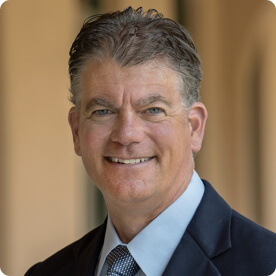As global and national events continue to remind us about what’s really important, our board of directors and staff remain deeply and increasingly committed to deploying the power of giving to create positive change in the world.
Recently, we reflected on a 2017 Forbes post about the important role community foundations play in responding to tragedies and disasters. Still relevant nearly five years later, this article offers a simple review of the ways San Diego Foundation and other community foundations across the country are uniquely qualified to address global issues with local impact, and local issues with global impact, through a combination of deep community knowledge and charitable giving expertise.
The short article may also be worth sharing with clients who are building philanthropic legacies now and for future generations. Also, check out our Emerging, Important Needs web page for up-to-date resources and guidance on how you and your clients can support the region during times of need and respond to major crises around the world.
Planning for retirement and giving to charity: Intertwined solutions in economically puzzling times
Retirement planning no doubt is an important discussion topic during client meetings every year. In recent months, though, you may have observed an uptick in clients’ questions about their plans for retirement, perhaps related to:
- Required minimum distributions (“RMDs”) from qualified retirement plans, including questions prompted by media coverage of pending legislation known as SECURE 2.0;
- Stability of retirement investments, a topic that is widely covered in mainstream financial news; and
- Rising interest rates and what that means for retirement, which is also a frequent topic in the media, along with inflation’s impact on retirees.
Against this backdrop, the issues become particularly complex for philanthropic clients. Here are answers to questions you may be asking:
What’s going on with updates to the charitable giving components proposed in the SECURE 2.0 Act?
Right now, SECURE 2.0 includes a provision that would index the $100,000 Qualified Charitable Distribution (“QCD”) allowance for inflation and also expand the technique to allow for a one-time transfer of $50,000 to a charitable remainder trust or other split-interest vehicle. But those enhancements are not the law, yet. A lot can happen as the House and Senate reconcile their respective bills before the legislation heads to President Biden for signature.
So what should I be telling my clients about the potential changes to the QCD rules? Or should I say nothing?
For clients who are seriously considering a QCD, it may be worth mentioning these potential enhancements. But in general, it’s usually more confusing than helpful to bring up pending legislation, no matter how exciting. Instead, consider placing your focus on the QCD rules as they currently stand. The QCD already is a strong planning tool.
When should I reach out to SDF for help with QCDs?
The answer is, anytime! We can help accept your clients’ QCDs to a variety of funds and help guide their QCD giving, regardless of whether the SECURE 2.0 enhancements become law. The recipient fund can’t be a donor-advised fund (DAF), but there are other very effective options.
With interest rates rising, are there particular techniques that I should be discussing with my clients who are planning for retirement and are charitable inclined?
Yes. Now is a good time to consider talking with your clients about charitable gift annuities. A charitable gift annuity, like any other annuity, is a contract. Your client agrees to make an irrevocable transfer of cash or assets to a charitable organization. In return, the charitable organization agrees to pay the client (or the client’s designated beneficiary) a fixed payment for life. Your client is eligible for an immediate income tax deduction for the present value of the future amount passing to charity.
What if my client needs the tax deduction this year but won’t be retiring for several years?
Charitable gift annuities offer flexibility, in that your client may choose to structure the contract as a “deferred gift annuity,” meaning that the client starts receiving payments at a future date (or upon a future event such as retirement), rather than immediately while the client’s effective income tax rate may still be high. In this way, the charitable gift annuity can be a tax-savvy component of an overall retirement plan.
How do rising interest rates factor in?
Client discussions about charitable gift annuities are especially timely because the American Council on Gift Annuities recently voted to increase the “rate of return assumption” used as guidelines for maximum payout rates. Effective on July 1, 2022, the return assumption will increase from 3.75% to 4.5%. This means that the Council’s suggested payout rates will be going up. That’s good news for a client’s income stream.
What is the bottom line on this?
The net-net here is that rising interest rates make the charitable gift annuity an even more attractive tool for clients who want to combine charitable planning with retirement planning. We can help you evaluate this option to determine if it is a good fit for your client.
Playbook: Helping clients organize their giving through a donor-advised fund (DAF)
Your clients will arrive in 15 minutes. You’re reviewing the file. Everything is in order. The estate planning documents are up to date, you’re ready to share the latest investment results, and you are prepared to debrief the 2021 tax season and make tax planning recommendations for the remainder of this year. It sounds pretty typical up to this point, right?
As you continue to scroll through the materials, you see the names of several charitable organizations that your clients have supported every year for at least a decade. Ah ha! This is an opportunity to add even more value to your clients.
Easy for a busy advisor to overlook, charitable giving habits are actually an important window into helping a client make planning decisions around their philanthropic intentions.
Here’s a simple playbook to guide you through a client conversation to begin establishing a charitable giving plan using a donor-advised fund at SDF.
- Call your clients’ attention to their charitable giving history. They might not even be aware of how much they are giving or how long they’ve been supporting their favorite charities.
- Gather more information about why the clients support those particular causes. Family tradition? Past involvement as a beneficiary of an organization’s services? Desire to impact a particular area of need?
- Talk with your clients about their community involvement. Do they serve on any boards of directors? Do they volunteer at local organizations?
- Review any charitable giving provisions in the current will or trust. Are the clients leaving a bequest to favorite charities?
- Ask your clients if they’ve ever considered organizing their giving through a donor-advised fund. If they are not familiar with donor-advised funds, perhaps offer a quick primer, and certainly offer to introduce the client to a member of the San Diego Foundation team. You can find helpful collateral in our Professional Advisor Toolkit.
- Briefly mention that a donor-advised fund can be an effective alternative to a private foundation, thanks to fewer expenses to establish and maintain, maximum tax benefits (higher AGI limitations and fair market valuation for contributing hard-to-value assets), no excise taxes and confidentiality (including the ability to grant anonymously to charities).
- Also mention that a donor-advised fund at SDF is frequently a more effective choice than a donor-advised fund offered through a brokerage firm (such as Fidelity or Schwab). That’s because, at a community foundation, the donor is part of a community of giving and has opportunities to collaborate with other donors who share similar interests. In addition, the donor is supported in strategic grantmaking, family philanthropy and opportunities to gain deep knowledge about local issues and nonprofits making a difference.
Finding the good, giving as a wealth strategy, and an open invitation
It can be hard to see the good in people as heartbreaking exceptions seem to dominate modern life, but it is worth remembering that philanthropy – ”love of humanity” – is alive and well.
A study at Stanford University indicates that a sense of community and calls to action help align people around common values. Indeed, high-profile examples of philanthropy, from Carnegie Hall to the manatees, help reinforce the notion that people can turn altruism into action through their leadership and financial resources.
What’s more, nearly two-thirds of high net-worth philanthropists state that charitable giving is part of their overall wealth strategy, according to a recently-released study by BNY Mellon reporting the results of a survey of individuals with investable assets of at least $5 million. Once again, the takeaway for advisors is that it is important in any situation to at least ask whether the client would like to incorporate charitable giving into their financial and estate plans.
If the answer is yes, the team at San Diego Foundation is just a phone call away to provide guidance and serve as a sounding board.
Your clients’ charitable intentions coupled with our ability to structure donor-advised funds and other charitable giving vehicles to meet your clients’ financial and community impact goals create many opportunities for us to work together. If you would like to see how we can help your clients make a difference in our region, contact me at (858) 245-1508 or jrogers@sdfoundation.org.





